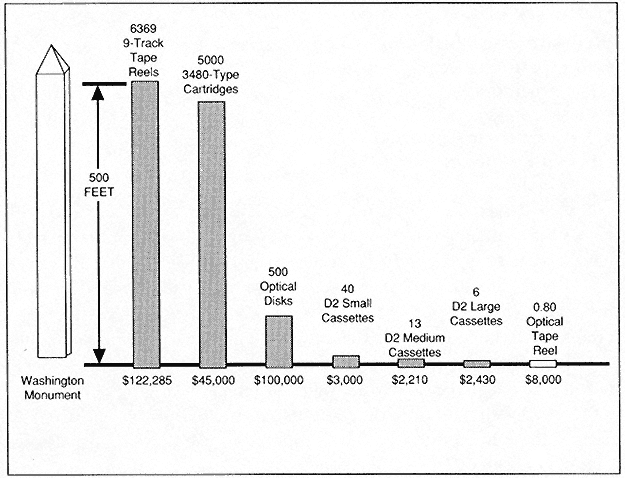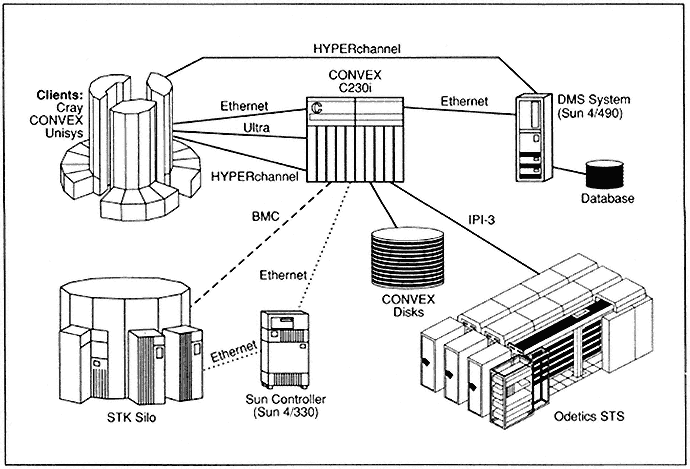Mass-Storage Requirements
A large number of automatic tape libraries, known as near-line (1012-bit) storage, have deteriorated and cannot be repaired much longer. Mass-storage systems must be updated to an acceptable level. Key items in the list of storage requirements are capacity, footprint, availability, and bit-error rate, and these cannot be overemphasized. In the implementation of new mass-storage systems, NSA has been driven by the need for standardization and by the use of commercial, supportable hardware, but the effort has not always been completely successful.
One terabyte of data can be stored in any one of the ways shown graphically in Figure 2. If stacked, the nine-track tape reels would reach a height 500 feet, almost as high as the Washington Monument. Clearly, the size and cost of storage on nine-track tapes is intolerable if large amounts of data are to be fed into users' hands or into their applications. Therefore, this type of storage is not a solution.
NSA is working toward an affordable mass-storage system, known as R1/R2, because the size is manageable and the media compact (see Figure 3). This goal should be achieved in the middle 1990s. Central to the system will be data management and a data-management system, database system, and storage manager for this kind of capability, all being considered as a server to a set of clients (Cray, CONVEX, Unisys). The mass-storage system also includes Storage Tek silos having capabilities approaching a terabyte in full 16-silo configuration. In addition, E-Systems is developing (funded by NSA) a very large system consisting of a D2 tape, eight-millimeter helical-scan technology, and 1.2 × 1015 bits in a box that has a relatively small footprint. Unfortunately, seconds to minutes are required for data transfer calls through this system to clients being served, but nevertheless the system represents a fairly robust near-line storage capacity.
Why is this kind of storage necessary? Because one HPC complex receives 40 megabits of data per second, 24 hours a day, seven days a week—so one of these systems would be full in two days. Why is the government paying for the development of the box? Why is industry not developing it so that NSA might purchase it? Because the storage technology industry is far from robust, sometimes close to bankruptcy.
Figure 2.
Storage requirements for one terabyte of data, by medium.
Figure 3.
Mass-storage system for R1/R2 ![]() architecture
architecture ![]() .
.

